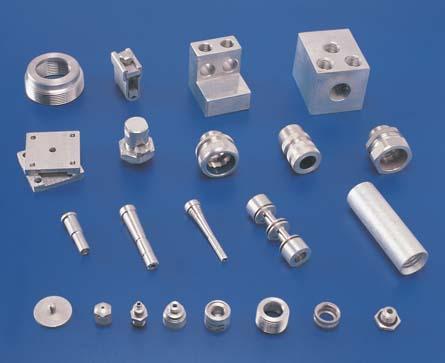Aluminum turned parts have become an integral part of numerous industries, ranging from aerospace and automotive to electronics and construction. These components are manufactured through the process of turning, where a cutting tool removes material from a rotating workpiece to create the desired shape and dimensions. In this article, we will delve into the world of aluminum turned parts, highlighting their lightweight nature, efficiency, and versatility in modern applications.
-
Historical Background: The utilization of aluminum in turned parts began to gain prominence in the early 20th century, as advancements in aluminum alloy development and machining techniques expanded its industrial applications. Aluminum's exceptional lightweight properties, coupled with its excellent strength-to-weight ratio, have made it a preferred choice for numerous industries seeking to optimize performance and fuel efficiency.
-
Aluminum Alloys: Aluminum turned parts are predominantly crafted from various aluminum alloys to enhance their mechanical properties and suitability for specific applications. These alloys often contain additional elements such as copper, magnesium, silicon, and zinc to impart desirable characteristics like improved strength, corrosion resistance, and thermal conductivity. Commonly used aluminum alloys in turned parts include 6061, 7075, 2024, and 5083.
-
Turning Techniques: a. Traditional Turning: Traditional turning of aluminum involves using a lathe machine and manually operating the cutting tool. Skilled operators shape the workpiece by removing material with precision. While traditional turning is still employed for certain applications, it is gradually being replaced by CNC (Computer Numerical Control) turning for increased efficiency and accuracy.
b. CNC Turning: CNC turning utilizes computer-controlled machines equipped with automated tools. The process begins by designing a 3D model of the desired component using computer-aided design (CAD) software. The CAD data is then translated into machine-readable instructions, guiding the CNC machine to execute precise cutting operations. CNC turning offers higher production rates, improved accuracy, and consistency, making it ideal for complex geometries and large-scale manufacturing.
- Advantages of Aluminum Turned Parts: a. Lightweight and High Strength-to-Weight Ratio: Aluminum Turned Parts for its lightweight nature, making it an excellent choice for industries that prioritize weight reduction, such as aerospace and automotive. Despite its low weight, aluminum exhibits impressive strength-to-weight ratios, providing structural integrity while minimizing overall weight.
b. Excellent Machinability: Aluminum is a highly machinable material, allowing for efficient and cost-effective manufacturing of turned parts. Its low melting point, low cutting force requirements, and excellent chip control make it easier to work with, resulting in reduced machining time and improved productivity.
c. Corrosion Resistance: Aluminum turned parts possess natural corrosion resistance, thanks to their ability to quickly form a protective oxide layer when exposed to oxygen. This inherent property makes aluminum suitable for applications in harsh environments, including marine and outdoor settings.
d. Thermal Conductivity: Aluminum exhibits excellent thermal conductivity, facilitating efficient heat dissipation. This property is particularly advantageous in industries such as electronics, where heat management is crucial to ensure optimal performance and prevent component failure.
e. Versatility and Recyclability: Aluminum turned parts offer versatility in terms of design flexibility and compatibility with various manufacturing processes. They can be easily formed into complex shapes, allowing for innovative designs and custom solutions. Furthermore, aluminum is fully recyclable, making it an environmentally sustainable choice.
- Applications: Aluminum turned parts find widespread applications across various industries, including: a. Aerospace: Aircraft components, engine parts, landing gear, and structural elements. b. Automotive: Engine components, transmission parts, chassis components, and heat exchangers.


